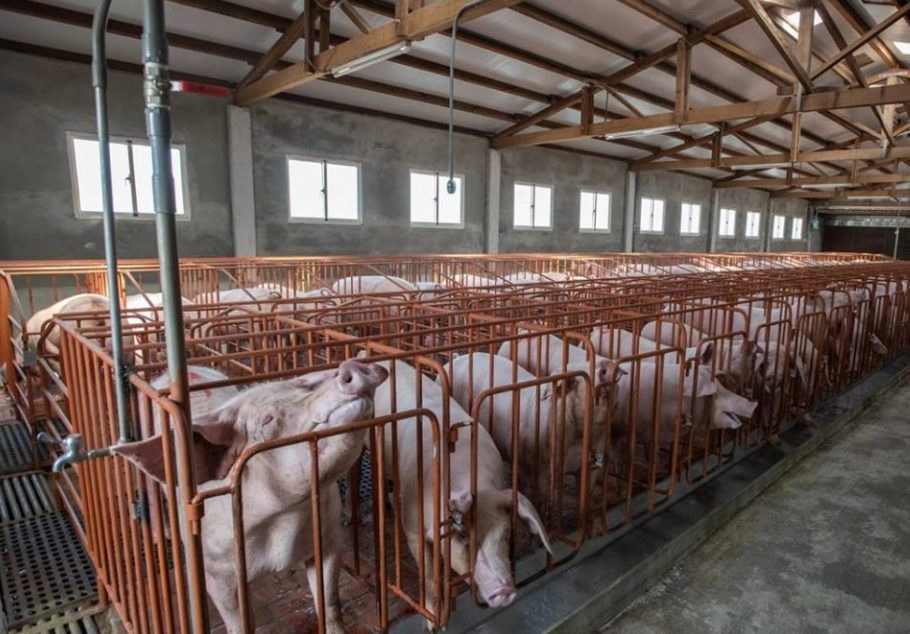
Lighting is a critical yet often overlooked component of modern pig farming. From optimizing growth rates and reproductive performance to reducing stress and energy costs, a well-designed lighting system can transform the efficiency and welfare of swine operations. This article explores the science-backed strategies, technologies, and best practices for implementing effective lighting solutions in pig farms.
1. The Impact of Light on Swine Health and Performance
A. Biological and Behavioral Effects
Pigs are highly sensitive to light, which regulates their:
- Circadian Rhythms: Influences feeding, activity, and rest patterns.
- Reproductive Cycles: Proper photoperiods synchronize sow estrus and improve farrowing rates.
- Immune Function: Reduced stress from appropriate lighting enhances disease resistance.
B. Key Lighting Parameters
- Photoperiod (Light Duration):
- Sows and Piglets: 14–16 hours of light to support lactation and growth.
- Growing/Finishing Pigs: 8–12 hours to balance muscle development and rest.
- Light Intensity:
- Farrowing Areas: 100–200 lux for caregiver visibility and piglet monitoring.
- General Housing: 40–80 lux (avoid exceeding 200 lux to prevent stress).
- Light Spectrum:
- Blue-White (5000K): Boosts daytime alertness and feeding activity.
- Red Light (600–700 nm): Calms pigs during rest and nighttime checks.
2. Designing a Pig Farm Lighting System
A. Stage-Specific Lighting Strategies
- Farrowing Rooms:
- High Intensity: 150–200 lux to monitor sows and newborn piglets.
- Uniform Coverage: Eliminate shadows to reduce piglet crushing risks.
- Weaning and Growing Areas:
- Controlled Photoperiod: 12–14 hours of light to encourage consistent feeding.
- Zonal Lighting: Brighter zones near feeders (80 lux) and dimmer resting areas (40 lux).
- Finishing Barns:
- Balanced Cycles: 8–10 hours of light to optimize growth without overstimulation.
B. Lighting Equipment Selection
- LED Fixtures:
- Energy Efficiency: 60–70% savings over traditional lighting.
- Durability: IP65-rated fixtures withstand humidity and washdowns.
- Adjustable Spectrum: Switch between blue-white (day) and red (night).
- Placement Guidelines:
- Mount fixtures 3–4 meters above floors for uniform distribution.
- Space fixtures 4–5 meters apart in large barns.
C. Automation and Smart Controls
- Timers: Maintain consistent schedules (e.g., 6 AM to 8 PM for sows).
- Dimmers: Simulate 20–30-minute sunrise/sunset transitions to reduce stress.
- Motion Sensors: Activate bright lights only during inspections or feeding.
3. Energy Efficiency and Sustainable Practices
A. LED Retrofitting
- Case Study: A 1,000-head finishing barn reduced energy costs by 55% after replacing 400 fluorescent fixtures with LEDs.
- ROI: Payback achieved in 1–3 years through energy savings and reduced maintenance.
B. Solar-Powered Systems
- Off-Grid Solutions: Solar panels power LEDs in remote farrowing huts or pasture-based systems.
- Battery Backup: Ensure continuous operation during power outages.
C. Reducing Light Pollution
- Full-Cutoff Fixtures: Direct light downward to comply with rural light trespass regulations.
- Light Barriers: Install curtains or baffles to contain spillage around barns.
4. Common Lighting Mistakes and Solutions
- Overlighting: Intensity >200 lux increases stress and tail-biting.
- Fix: Use dimmable LEDs and adhere to recommended lux levels.
- Inconsistent Schedules: Erratic photoperiods disrupt growth cycles.
- Fix: Automate lighting with programmable timers.
- Poor Spectrum Choices: Blue-rich light at night disturbs sleep.
- Fix: Implement red lighting for nighttime checks.
5. Innovations in Pig Farm Lighting
A. Smart Barn Technology
- IoT Integration: Monitor and adjust lighting remotely via smartphones or cloud platforms.
- Behavioral Analytics: Cameras detect aggression or illness, triggering light adjustments (e.g., red light to calm pigs).
B. Circadian Lighting
- Dynamic Spectra: Shift from cool white (5000K) at dawn to warm white (3000K) at dusk.
- Moonlight Mode: Provide 5–10 lux of red light for nighttime checks without disrupting sleep.
C. UV Applications
- UVB Lighting: Enhances vitamin D synthesis in indoor-raised pigs, improving bone health.
- UVC Sanitization: Reduces airborne pathogens in ventilation systems (requires strict safety measures).
refer: lighting pig farms
